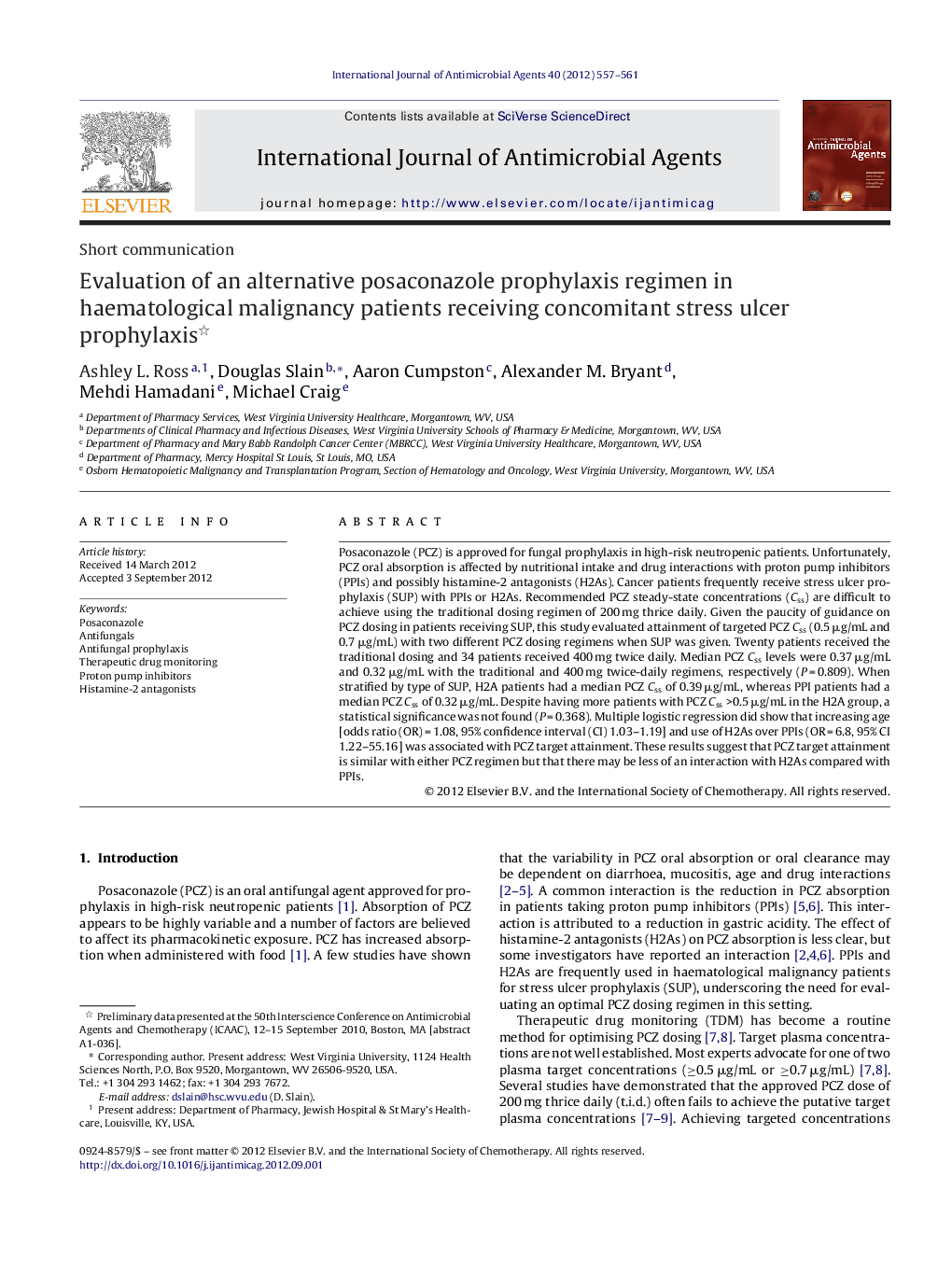| Article ID | Journal | Published Year | Pages | File Type |
|---|---|---|---|---|
| 6118099 | International Journal of Antimicrobial Agents | 2012 | 5 Pages |
Abstract
Posaconazole (PCZ) is approved for fungal prophylaxis in high-risk neutropenic patients. Unfortunately, PCZ oral absorption is affected by nutritional intake and drug interactions with proton pump inhibitors (PPIs) and possibly histamine-2 antagonists (H2As). Cancer patients frequently receive stress ulcer prophylaxis (SUP) with PPIs or H2As. Recommended PCZ steady-state concentrations (Css) are difficult to achieve using the traditional dosing regimen of 200 mg thrice daily. Given the paucity of guidance on PCZ dosing in patients receiving SUP, this study evaluated attainment of targeted PCZ Css (0.5 μg/mL and 0.7 μg/mL) with two different PCZ dosing regimens when SUP was given. Twenty patients received the traditional dosing and 34 patients received 400 mg twice daily. Median PCZ Css levels were 0.37 μg/mL and 0.32 μg/mL with the traditional and 400 mg twice-daily regimens, respectively (P = 0.809). When stratified by type of SUP, H2A patients had a median PCZ Css of 0.39 μg/mL, whereas PPI patients had a median PCZ Css of 0.32 μg/mL. Despite having more patients with PCZ Css >0.5 μg/mL in the H2A group, a statistical significance was not found (P = 0.368). Multiple logistic regression did show that increasing age [odds ratio (OR) = 1.08, 95% confidence interval (CI) 1.03-1.19] and use of H2As over PPIs (OR = 6.8, 95% CI 1.22-55.16] was associated with PCZ target attainment. These results suggest that PCZ target attainment is similar with either PCZ regimen but that there may be less of an interaction with H2As compared with PPIs.
Keywords
Related Topics
Life Sciences
Immunology and Microbiology
Applied Microbiology and Biotechnology
Authors
Ashley L. Ross, Douglas Slain, Aaron Cumpston, Alexander M. Bryant, Mehdi Hamadani, Michael Craig,
